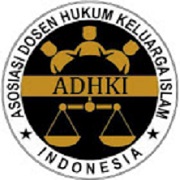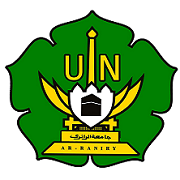The Practice of Adoption in the Sasak Community and Its Implications for Marriage Law in Indonesia
Abstract
Adopting a child is a tradition that has long been practiced by Arab society and continues to this day. The practice of adopting children when Islam came was then perfected by the Prophet Muhammad PBUH, so that it has a basis in Islamic law. This study explores adoption practices in contemporary Sasak society and their implications for reformulating Islamic Marriage Law. This research uses a normative juridical approach analyzed with the theory of maqāṣid al-sharī'ah. The data analyzed are laws, legal regulations and decisions of religious courts on the island of Lombok, West Nusa Tenggara regarding child adoption cases and norms regarding child protection as normative legal material. These data sources are collected through documentation techniques and analysed using data compaction, display, and conclusion-drawing stages, employing analogical and teleological legal interpretation approaches. The study identifies three classifications of adopted children based on marital status and the presence of biological parents: legitimate children, illegitimate children, and children with unclear status. The research upholds the Islamic legal principle that adoption does not sever the child's lineage from their biological parents, even if their existence is unknown, and does not establish a lineage between the adopted child and their adoptive parents. The study has three implications for Islamic marriage law in Indonesia: including adoption provisions in the Marriage Law, eliminating the article that allows polygamy as a solution for childless couples, and adding requirements for marriages involving "unclear children" as authentic evidence to prove no blood relation between the prospective bride and groom, thus preventing invalid marriages.
Keywords
Full Text:
PDFReferences
Journals and Books
Abd Syakur, Ahmad, Islam Dan Kebudayaan: Akulturasi Nilai-Nilai Islam Dalam Budaya Sasak (Yogyakarta: Adab Press, Faculty of Adab, UIN Sunan Kalijaga, 2006).
Abubakar, Ali, et.al., “The Right of a Child Outside the Legal Marriage of a Biological Father: The Analysis of Ḥifẓ Al-Nafs as Law `Illat,” Samarah: Jurnal Hukum Keluarga dan Hukum Islam 5, No. 1 (2021). DOI: http://dx.doi.org/10.22373/sjhk.v5i1.9256.
Al-Ghazali, Muhammad bin Muhammad, Al-Mustashfa Min Ilm Al-Usul (Beirut: Darul Fikr, 1990).
Al-Zuhaily, Wahbah, Fiqh Islam wa Wa Adillatuhu, Vol. 6, Translation by Abdul Hayyie Al-Kattani et al, Jakarta: Gema Insani, 2011.
Al Munawar, Faishal Agil, “‘Abd Al-Majīd Al-Najjār’s Perspective on Maqāṣid Al-Sharī’ah,” Juris: Jurnal Ilmiah Syariah 20, 2 (2021). DOI: http://dx.doi.org/10.31958/juris.v20i2.4281.
Amak, FZ, Proses Undang-Undang Perkawinan (Bandung: Alma'arif, 1976).
Amboro, Florianus Yudhi Priyo, and Suriani Suriani, "Hak Waris Anak Adopsi Ditinjau Dari Kuhperdata Dan Hukum Waris Adat Tionghoa Di Kota Tanjungpinang," Journal of Judicial Review 20, No. 1 (2018).
Aprianto, Tri Chandra, 'Rules at Crossroads: Debate Over The 1973-1994 Marriage Bill. Historia 1, No. 1 (2019).
Auda, Jasser, Maqasid Al-Shariah A Beginner's Guide, The International Institute of Islamic Thought, London-Washington, Cromwell Press, United Kingdom, 2008.
Auda, Jasser, Maqasid Al-Syariah as Philosophy of Islamic Law. A Systems Approach, The International Institute of Islamic Thought, London-Washington, Biddles Limited, King's Lynn United Kingdom, 2007.
Baharuddin, Ahmad Syukran, et.al., "Forensic Biology In Preservation Of Lineage/Ancestry (Hifz Al-Nasab/Nasl)", UMRAN-International Journal of Islamic and Civilizational Studies 2, No. 2 (2015).
Bakri, Nada Farhana, and Sri Sudaryatmi Sukirno, 'Implementation of Adoption and Its Impact on Inheritance of Overseas Balinese Indigenous Peoples in DKI Jakarta', Diponegoro Law Journal 6, No. 2 (2017).
Basyar, Achmad Beadie Busyroel, 'Protection of Nasab In Maqashid Sharia Theory," Maqashid: Jurnal Hukum Islam 3, No. 1 (2020).
Bintoro, Rahadi Wasi, et.al., “Determination of The Authority to Adjudicate Child Adoption for Muslims in Indonesia,” Jurnal Dinamika Hukum 21, No. 3 (2022). DOI: 10.20884/1.jdh.2021.21.3.3150.
Chaq, Moh Dliya'ul, 'Children's Lineage in Islamic Law: Reading the Opportunities of Science and Technology in Determining Nasab', Tafaqquh: Journal of Islamic Research and Studies 6, No. 1 (2018).
Djawas, Mursyid, “The Alimony Obligation of a Civil Servant and Non-Civil Servant Father towards Children Post-Divorce (The Study on Aceh Syar'iyyah Court Decision Study of 2019),” El-Usrah: Jurnal Hukum Keluarga 6, No. 1 (2023). DOI: http://dx.doi.org/10.22373/ujhk.v6i1.9493.
Faradz, Haedar, Pengangkatan Anak menurut Hukum Islam," Jurnal Dinamika Hukum 9, No. 2 (2009).
Herawati, Andi, ' Maslahat Menurut Imam Malik Dan Imam Al-Ghazali (Studi Perbandingan)," Diktum: Jurnal Syariah Dan Hukum 112, No. 1 (2014). https://doi.org/10.35905/diktum.v12i1.194.
Heriawan, Muhammad, “Pengangkatan Anak Secara Langsung Dalam Perspektif Perlindungan Anak,” Jurnal Katalogis 5, No. 5 (2017).
Jamil, Muhammad, "Nasab Dalam Perspektif Tafsir Ahkam," Ahkam: Jurnal Ilmu Syariah 16, No. 1 (2016).
Jumarim, Peran Sosial Perempuan Sasak di Lombok (Mataram: Sanabil, 2019).
Jumarim Jumarim and Masnun Tahir, “Telaah Yuridis Dan Sosiologis Terhadap Budaya Pengangkatan Anak di Lombok Nusa Tenggara Barat,” Istintbath: Jurnal Ilmu Hukum dan Ekonomi Islam, (2020). DOI: https://doi.org/10.20414/ijhi.v19i2.271.
Kasdi, Abdurrahman, 'Maqasyid Syari'ah Perspective of Imam Syatibi's Thoughts in the Book of Al-Muwafaqat', Yudisia: Journal of Islamic Law and Legal Thought 5, No. 1 (2016).
Kasim, Fajri M, et.al., “The Protection of Women and Children Post-Divorce in Sharia Courts in Aceh: A Sociological Perspective,” Ahkam: Jurnal Ilmu Syariah 22, No. 2 (2022). DOI: 10.15408/ajis.v22i2.28747.
Marzuki, Peter Mahmud, Penelitian Hukum, Jakarta: Kencana, 2013.
Meliala, Djaja, S., Pengangkatan Anak (Adoption) di Indonesia (Bandung: Trasito, 2008).
Misnan, “Problematika Anak Angka dalam Perspektif Hukum Islam” Taqnin: Jurnal Syariah dan Hukum 2, No. 2, (2020). DOI: http://dx.doi.org/10.30821/taqnin.v2i02.8433.
Muda, Tengku Fatimah Muliana Tengku, et.al., "Use of DNA for Determining Nasab Al-Walad Li Al-Firasy in Designating Islamic Family Laws in Malaysia," Journal of Islam and Contemporary Society 5, (2011).
Mujib, Lalu Supriadi bin, "Maqasid al-Shari’ah dari Masa al-Syathibi Sampai dengan Ibn Ashur: Rasionalisasi Hukum Islam Dalam Meresposn Relasi Muslim Dan Non Mulsim, in Muhammad, Horizon Ilmu: Reorientasi Paradigmatik Integrasi Keilmuan, (Mataram: UIN Mataram Press, 2022).
Muniroh, Siti, and Khoiruddin Nasution, “The Adoption of Found Child According to Islamic Law and Law No. 3 of 2006 on Religious Courts in the Perspective of Maqasid Al-Shari'ah,” Jurnal Millah 21, No. 1 (2021). DOI: 10.20885/millah.vol21.iss1.art4.
Adawiyah Nasution, “Caused by Law of Children's Law According to Law Number 23 of 2002 Concerning Child Protection,” Jurnal ilmiah Penegakan Hukum 6, No. 1 (2019).
Noor, Zanariah, "Al-Laqit: The Rights of the Foundlings under Islamic and Civil Law in Malaysia," Jurnal Syariah 27, no. 1, (2019).
Simanjuntak, Enrico, “Peran Yurisprudensi dalam Sistem Hukum di Indonesia,” Jurnal Konstitusi 16, No. 1, (2019). DOI: https://doi.org/10.31078/jk1615.
S. Praja, Praja, Teori Hukum dan Aplikasinya, Bandung: Pustaka Setia, 2018.
Suprapto Suprapto, “Sasak Muslims and Interreligious Harmony: Ethnographic Study of the Perang Topat Festival in Lombok-Indonesia,” Journal of Indonesian Islam 11, No. 1 (2017). DOI: 10.15642/JIIS.2017.11.1.77-98.
Syahbandir, Mahdi, et.al., "State Authority for Management of Zakat, Infaq, and Sadaqah as Locally-Generated Revenue: A Case Study at Baitul Mal in Aceh,” Al-Ihkam: Jurnal Hukum dan Pranata Sosial 17, No. 2 (2022).https://doi.org/10.19105/al-lhkam.v17i2.7229.
Law and Rules of Law
Presidential Instruction No. 1 of 1991 concerning the Compilation of Islamic Law
Law, Number 1 of 1974 concerning Marriage.
Law, Number 23 of 2002 concerning Child Protection
Law, Number 3 of 2006 concerning Religious Courts.
Law, Number 4 of 1979 concerning Child Welfare.
Law, Number 7 of 1989 concerning the Religious Courts Law no. 3 of 2006 and by Law no. 50 in 2009
Law, Number 35 of 2014 Amendments to Law no. 23 of 2002 concerning Child Protection.
DOI: http://dx.doi.org/10.22373/sjhk.v8i1.18581
Refbacks
- There are currently no refbacks.
Copyright (c) 2024 Jumarim Jumarim

This work is licensed under a Creative Commons Attribution-ShareAlike 4.0 International License.
Samarah: Jurnal Hukum Keluarga dan Hukum Islam has been indexed by:


















